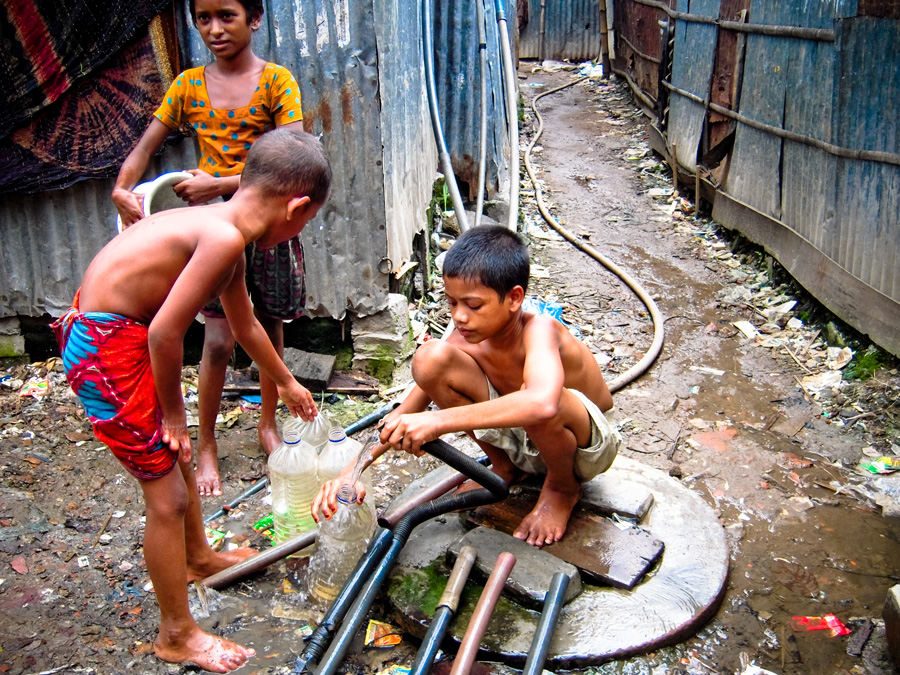Innovative Solutions for Water Scarcity

Around the world, 1.1 billion people lack access to water, while 2.7 billion face water scarcity for at least one month each year. With changing weather patterns and an increase in extreme weather events like drought and extreme heat, water scarcity has become an even bigger threat than before. Every year, 829,000 people die from diseases directly related to the Triple Threat (unsafe water, poor sanitation and inadequate hygiene).
Despite challenges in how to tackle the issue of water scarcity, organizations and governments across the globe have already begun to implement initiatives to address this issue. For instance, in 2015, the OECD introduced its Water Governance Programme to advise governments at all levels on improving water policies. Scientific research conducted by institutions like the University of Birmingham and organizations like WWF is also focusing on finding solutions for water scarcity.
There are a variety of technologies undergoing development across the globe, from startups to governments, that are addressing the issue of water scarcity. Among these, the following innovative solutions stand out and show potential for tackling the issue successfully.
Solar Panel Technology: Desolenator
Desolenator, a desalination start-up, anticipates a 400% increase in the demand for drinkable water in the manufacturing sector. The company employs solar panel technology to harness sunlight and generate electricity. By utilizing thermal energy, it is able to purify contaminated water through the process of boiling, transforming it into steam and ultimately producing clean water.
Desolenator is currently partnering with the Dubai Electricity and Water Authority to work on a project in Dubai, aligning with the Dubai Clean Energy Strategy 2050. Its goal is for 100% of energy production to come from clean energy sources by 2050. Not only is Desolenator helping to harness innovative solutions for water scarcity, it is doing so in a sustainable way.
Microfiltration: LifeStraw
LifeStraw, a company specializing in microfiltration, has developed a device that removes 99.9% of waterborne bacteria. It is relatively inexpensive, can be used at home or outdoors and removes more than 30 contaminants in water including chemicals, pesticides, bacteria, microplastics and parasites. LifeStraw is finding innovative solutions to tackling water scarcity. For example, with every 500 products sold, it distributes a LifeStraw purifier to a school in need as part of its Give Back Programme. It also works in partnership with the Carter Center for Guinea worm eradication and in emergency response work, distributing its products to those in need to ensure access to clean water.
Filter Paper: Folia Water
Folia Water has developed a filter paper infused with silver nanoparticles that can eliminate bacteria, viruses and parasites from water. The filter is cost-effective and capable of cleaning 20 liters of water. In 2015, Folia Water trialed the filter at 25 contaminated water sources in Ghana, Bangladesh and South Africa and successfully removed more than 99% of bacteria. While Folia Water needs more funding, it has provided safe drinking water to more than 40,000 low-income individuals in two districts of Bangladesh and aims to extend this to 500 million South Asians.
Agricultural Irrigation Technology
Agricultural irrigation technology generally involves how farmers can efficiently yield crops in the face of water shortages. The three main technologies include gravity, sprinkler and micro irrigation. These allow farmers to maximize crop yield despite water shortages. Since agricultural practices consume around 70% of the world’s freshwater supplies, governments around the world have been implementing policies to encourage agricultural irrigation. For example, the Moroccan Government has expanded irrigation with investment in the agricultural sector. Agricultural irrigation helps to manage water scarcity by increasing the effectiveness of water management and reducing water waste.
Wastewater Recycling: Membrane Bioreactor
Wastewater recycling reduces dependence on freshwater resources and limits the amount of discharged wastewater. Water recycling can be defined as the process of treating wastewater by using machines and chemicals for the reuse of water in industrial cycles. Recyclable water can include sewage, industrial drainage or domestic greywater. An effective solution is recycling waste water through a Membrane Bioreactor which removes toxins through a filtration system. Currently, the U.K. only recycles 2-10% of wastewater. Despite this, there are many positive impacts to recycling wastewater, including reducing costs for incoming water use, reducing costs for water disposal and lowering the environmental impact of operations. Alongside this, recycling wastewater can help address water scarcity, since less is going to waste.
Looking Ahead
Water scarcity remains a global issue facing billions of people worldwide, but organizations and governments are making efforts to tackle water scarcity through various initiatives. For example, the OECD’s Water Governance Programme provides guidance to governments on improving their policies, while scientific research has led to the development of products such as Desolenator, LifeStraw and Folia Water which are attempting to address water scarcity. Continued collaboration, policies and research show that innovative solutions can help in combating water scarcity.
– Rosie Lyons
Photo: Flickr
